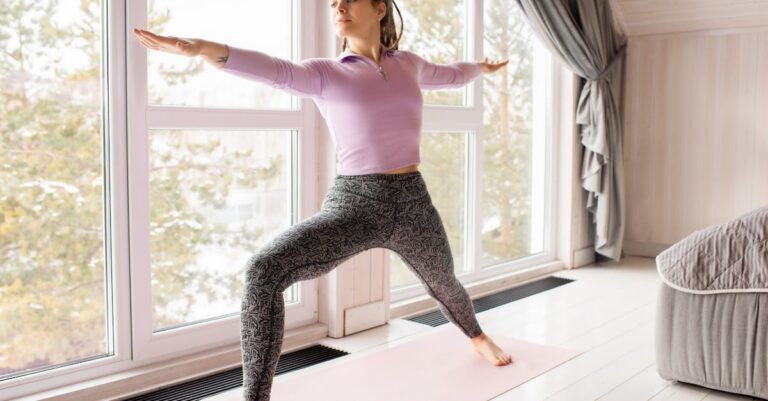Okay, let’s talk about something real. You decided you were gonna get fit, right from your living room. Awesome! You maybe even bought some cool gear, cleared a space, and felt super motivated. But then… life happened. The sofa started looking way more inviting than squats, and finding time felt like searching for a lost sock. Suddenly, your home workout routine isn’t much of a routine anymore. Sound familiar? You’re definitely not alone! Sticking with exercise at home is genuinely tricky. This article is here to help you figure out how to actually make it stick, turning those “I should work out” thoughts into “I *did* work out” realities, consistently. Let’s dive into some simple, doable ways to make it happen.
Find Your Real Why (It’s Deeper Than Abs)
Think about why you really want to work out at home. Sure, looking good is nice, but that motivation can fade fast. What’s the deeper reason? Maybe it’s having more energy to play with your kids or pets without getting winded. Maybe it’s feeling stronger when carrying groceries, sleeping better, or just managing stress from school or work. Picture this: imagine Sarah, who started working out because she wanted to hike with her friends without feeling left behind. That specific goal, feeling capable and included, kept her going way more than just wanting “to be fit.” Find that personal thing for you. When motivation dips (and it will!), reminding yourself of your *real* why can be the push you need.
Make Starting Feel Effortless
Sometimes the biggest hurdle is just getting started. So, make it ridiculously easy! Think about what stops you. Is it finding workout clothes? Lay them out the night before. Is it finding the time? Start small – even 10-15 minutes counts! Is it not knowing what to do? Have a go-to short routine ready. Let’s imagine Ben: he always skipped morning workouts because he felt rushed. His fix? He started setting his alarm just 15 minutes earlier and doing a quick pre-planned circuit right next to his bed before even getting dressed properly. By removing those little barriers, he made starting almost automatic. Less thinking, more doing!
Schedule It Like It’s Non-Negotiable
If you just hope to “find time” for a workout, you probably won’t. Life always fills the gaps. Treat your workout time like an important appointment – because it is! Put it in your calendar, set reminders on your phone, whatever works. Tell your family or roommates, “Hey, this is my workout time.” Think of it like this: you wouldn’t just skip a doctor’s appointment or ditch a friend you made plans with, right? Give your workout that same level of importance. It doesn’t have to be an hour every day; maybe it’s 20 minutes three times a week. Pick times that realistically work for your schedule and then protect that time.
Shake Things Up: Bye-Bye Boredom!
Doing the exact same routine over and over? Snoozeville! Boredom is a major motivation killer. The beauty of home workouts is the endless variety available. One day you could do a high-energy dance video on YouTube, the next day some bodyweight strength exercises, maybe some relaxing yoga or stretching later in the week. Try different online instructors, explore different types of fitness apps, or even just change your workout music playlist. It’s like eating – you wouldn’t want the same meal every single day, right? Keeping your workouts fresh and interesting makes you more likely to look forward to them (or at least dread them less!). Some people find using a fitness platform or app helpful here, as it can offer different styles and track progress all in one place, taking the guesswork out of finding something new.
Get a Buddy or Go Public (In a Small Way)
Knowing someone else is involved can make a huge difference. Can you team up with a friend for virtual workouts or check-ins? Just texting “Did you workout today?” can be surprisingly effective. Or, maybe join an online fitness community where you can share struggles and successes. It doesn’t have to be super public. Even just tracking your workouts on an app or a simple wall calendar can create a sense of accountability. For example, imagine Maya and Chloe deciding to text each other a sweaty selfie after their workouts. It’s a simple, fun way they keep each other on track. Having that little bit of external motivation or support system really helps you show up, even on days you don’t feel like it.
Listen Up: Your Body Knows Best
Consistency doesn’t mean pushing yourself to the max every single day, no matter what. Sometimes, your body needs a break, or maybe just something gentler. Learn to listen to its signals. Feeling super sore? Maybe opt for stretching or a walk instead of intense cardio. Feeling genuinely exhausted, not just lazy? A rest day might be more beneficial than forcing a workout and risking burnout or injury. It’s okay to adjust! Think about it: if your phone battery is at 5%, you plug it in, right? You don’t keep trying to use it until it dies. Treat your body with the same care. Flexibility is key – missing one workout isn’t failure, it’s just life. Just get back on track next time.
Celebrate Every. Single. Win. (Seriously!)
We’re often focused on big goals – losing X pounds, running Y miles. But consistency is built on small, everyday actions. So, celebrate them! Did you manage to work out three times this week, even when you were busy? Awesome! Pat yourself on the back. Did you choose a 10-minute workout over skipping entirely? That’s a win! Acknowledge your effort. Maybe keep a simple journal where you jot down when you worked out and how you felt. Seeing that progress build up, even slowly, is incredibly motivating. It shifts the focus from perfection to participation. It’s not about being perfect; it’s about showing up, again and again. That deserves recognition!
So, sticking with home workouts isn’t some magic trick; it’s about building smart habits and being kind to yourself. Remember your real why – the deep-down reason you started. Make it super easy to just begin each time, and schedule those workouts like important meetings you can’t miss. Keep things interesting by mixing up your routines so boredom doesn’t creep in, and find some kind of buddy system or tracking method for accountability. Crucially, listen to your body – rest is important too! And don’t forget to cheer yourself on for every small step you take. Building consistency takes time, but by using these ideas, you can turn your living room into a place where your fitness goals actually happen, one workout at a time.










